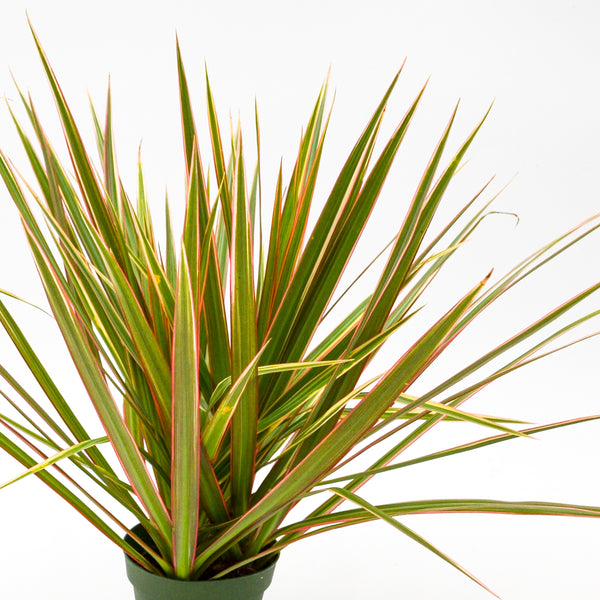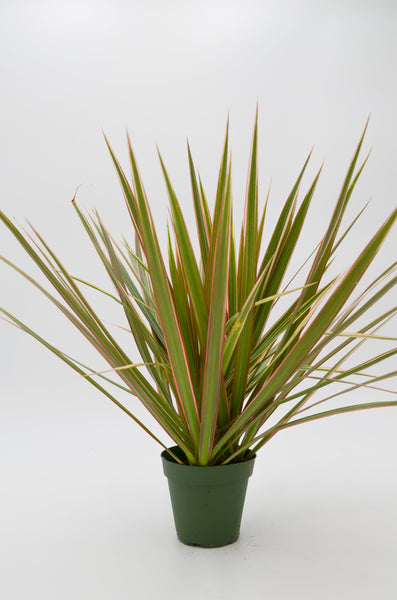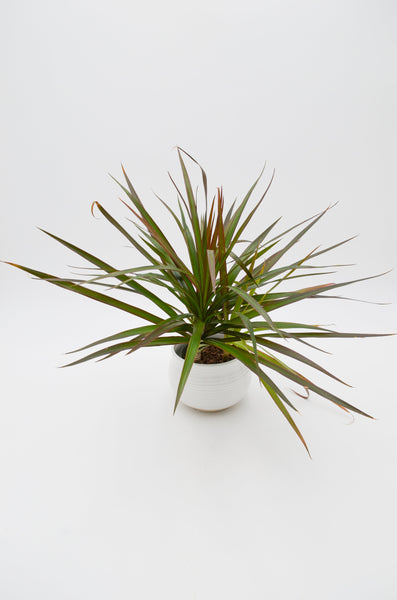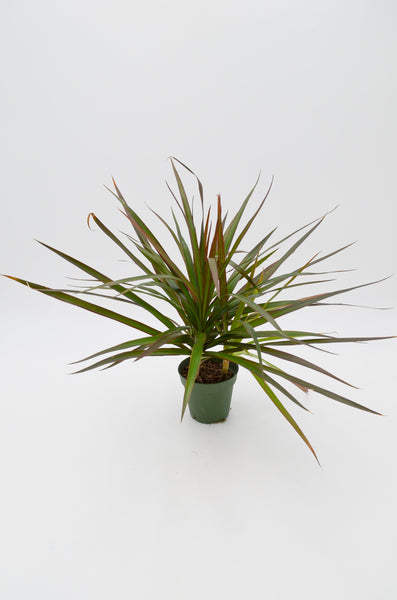Dracaena 'Colorama'
Dragon trees (Dracaena marginata) are low-maintenance, attractive houseplants with narrow, arching leaves that are green with red or purple margins. They're perfect for adding height and interest to your indoor space. Follow these care instructions to keep your dragon tree healthy and thriving:
-
Light: Place your dragon tree in a location with bright, indirect light. It can tolerate lower light conditions but may become leggy and lose some of its vibrant colors. Avoid direct sunlight, as it can scorch the leaves.
-
Water: Allow the top 1-2 inches of soil to dry out between waterings. Water your dragon tree thoroughly until it drains from the bottom of the pot, and then allow the excess water to drain completely. Be cautious not to overwater, as this can lead to root rot.
-
Humidity: Dragon trees can tolerate average indoor humidity levels but will appreciate a boost in humidity, especially during dry winter months. To increase humidity, you can place a tray filled with water and pebbles underneath the pot, mist the leaves occasionally, or use a humidifier.
-
Temperature: Maintain a temperature range of 65-80°F (18-27°C) for optimal growth. Dragon trees can tolerate a range of temperatures but avoid exposing them to temperatures below 55°F (13°C) or sudden temperature changes.
-
Fertilizer: Feed your dragon tree with a balanced liquid fertilizer every 4-6 weeks during the growing season (spring and summer). Use a half-strength solution to avoid over-fertilizing. Reduce feeding to once every 2-3 months during fall and winter.
-
Pruning: Prune your dragon tree as needed to maintain its shape and size. Remove any yellow or brown leaves and trim the tips if they become damaged. You can also pinch back the growing tips to encourage bushier growth.
-
Repotting: Repot your dragon tree every 2-3 years or when the roots outgrow the pot. Choose a well-draining potting mix and a pot that is 1-2 inches larger in diameter than the current one. Be gentle when handling the roots, and water the plant thoroughly after repotting.
-
Pest control: Keep an eye out for common pests such as spider mites, mealybugs, and scale insects. Treat any infestations with insecticidal soap or neem oil, following the manufacturer's instructions.
Pet-friendly or toxic to pets?
According to the ASPCA, dragon trees (Dracaena marginata) are toxic to cats and dogs. If ingested, they can cause symptoms such as vomiting, loss of appetite, increased salivation, and dilated pupils in cats due to the presence of saponins. It's best to keep your dragon tree out of reach of pets to prevent any potential health issues. If you suspect your pet has ingested any part of the plant, contact your veterinarian immediately.








